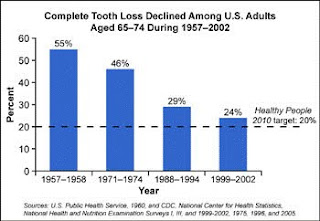
But it’s not just the food.
Americans, on average, drink enough for every person to have 7 bottles of liquor, 12 bottles of wine and 230 cans of beer. All capped off with a customary glass of champagne on New Year’s Eve.
If you don't bother to make good decisions about what you are eating and drinking, or to properly clean your pearly whites afterward, you could end up with tooth decay, gum disease and possible tooth loss.
With this in mind, I want to share a couple of oral health tips that will help keep your smile intact this holiday season and into the next:
1. If you choose to drink wine, choose red over white. While many people think red wine is worse because of its staining power, white wine contains more sugar which is actually more harmful for your teeth in the long run. Regardless of which wine you choose to drink, you should always rinse your mouth out with water before you brush your teeth.
2. If you choose to drink spirits or liquor the opposite is true. You should actually choose the lighter or clear liquids to avoid higher sugar contents. However if you are mixing a clear alcohol with a sugary juice or other drink then you still aren’t doing yourself any favors. As with the wine, you should rinse your mouth out with water after you drink and before you brush your teeth.
3. You should always consume candy in moderation – sugar free if possible. But if you are choosing between a candy cane and a piece of chocolate, go with the piece of chocolate. Sticky candies are less likely to wash out from between your teeth with saliva and therefore get more time in contact with your teeth. This is also true for fruit cake.
4. No matter how exhausted you may be from hosting your family or attending your fifth holiday party in a row, always remember to brush your teeth before you go to bed. If all the acid from the food you ate gets 8 hours to fester in your mouth it can do a whole lot of damage that could have been prevented with 2 minutes, a toothbrush, and some floss.
Good dental habits throughout the holidays – and year round – will help make for a happier New Year. As you make plans for 2011 I hope you all will resolve to be better to your teeth because that’s something we can all smile about.
-Dr. Linda Vidone, Associate Dental Director for DentaQuest


